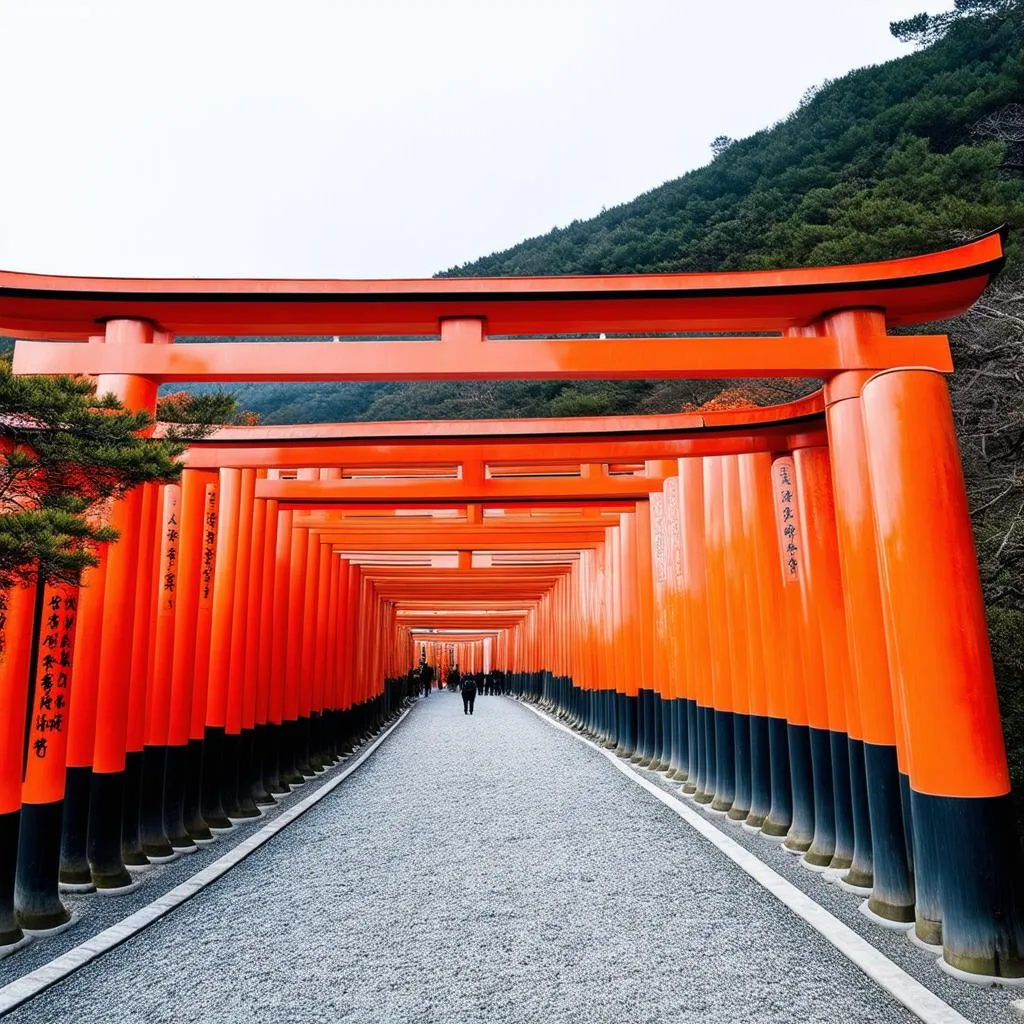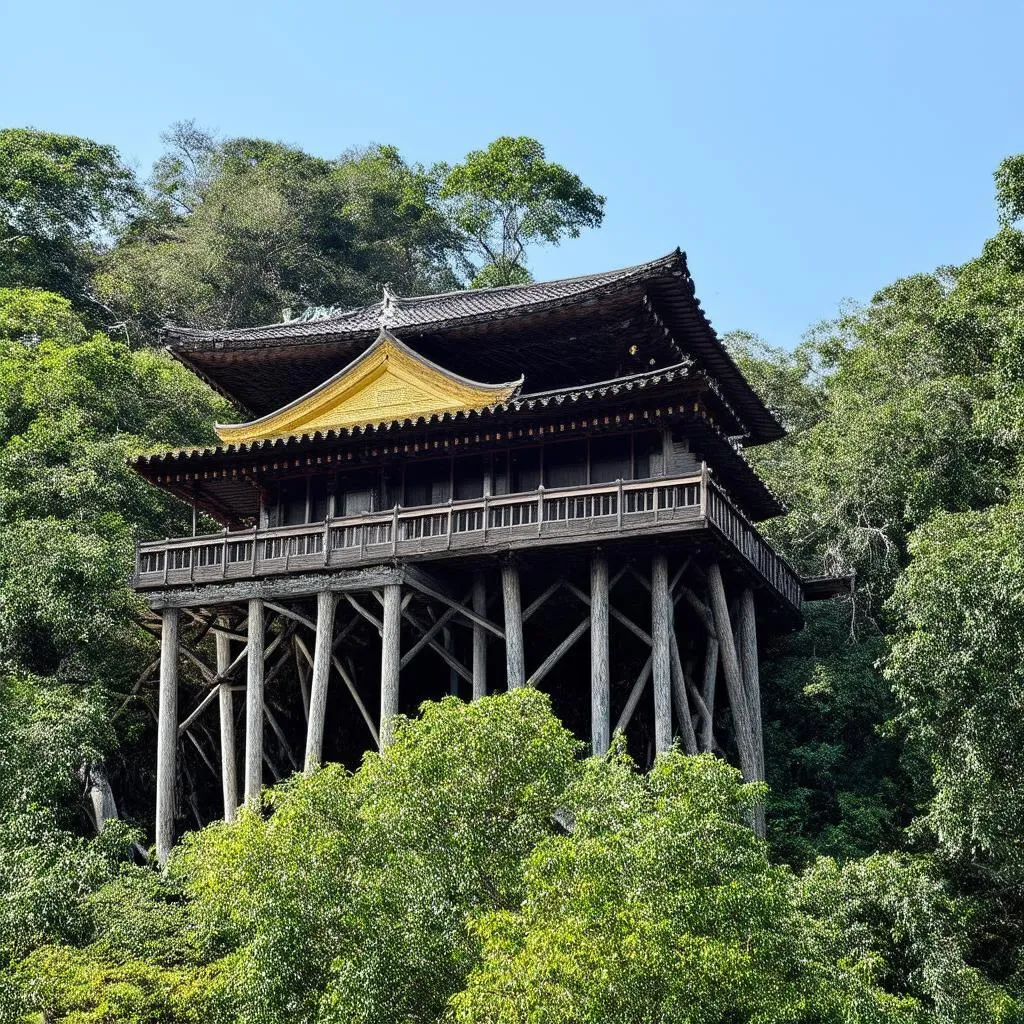“The heart of Japan beats in Kyoto,” whispered a seasoned traveler once, his eyes twinkling with the memory of ancient temples and serene gardens. And truly, Kyoto, the former imperial capital, beckons travelers with a symphony of history, culture, and natural beauty.
A Tapestry of Ancient Wonders and Modern Delights
Imagine strolling down a narrow, stone-paved street, the air fragrant with incense and the gentle strumming of a shamisen reaching your ears. This is Kyoto, where the past seamlessly intertwines with the present.
Must-See Tourist Spots in Kyoto
Kyoto’s charm lies in its diversity. Whether you seek spiritual enlightenment, architectural marvels, or a glimpse into the lives of geishas, Kyoto offers an unforgettable experience.
1. Fushimi Inari Shrine: Thousands of vibrant red torii gates wind their way up the mountainside, creating a mesmerizing and photogenic spectacle. Dedicated to Inari, the Shinto deity of rice and sake, the shrine is a testament to Japanese spirituality and offers breathtaking views of the city.
2. Kiyomizu-dera Temple: Perched on Otowa Mountain, this UNESCO World Heritage Site enchants with its wooden stage that juts out over the hillside, offering panoramic vistas. Legend has it that those who survive the 13-meter jump from the stage will have their wishes granted!
3. Arashiyama Bamboo Grove: A stroll through this ethereal grove, with towering bamboo stalks swaying gently in the breeze, feels like stepping into another world. The dappled sunlight filtering through the leaves creates a magical atmosphere, perfect for contemplation and photography.
4. Gion District: As dusk settles, the enchanting Gion district comes alive with the rustle of silk kimonos and the click of geta sandals. This is your chance to catch a glimpse of a geisha, an embodiment of Japanese artistry and tradition, hurrying to an appointment.
5. Kinkaku-ji (Golden Pavilion): Shimmering like a jewel on the water, the Golden Pavilion is a sight to behold. Its top two floors, completely covered in gold leaf, reflect beautifully on the mirrored surface of the pond, creating a breathtaking spectacle.
 Fushimi Inari Shrine in Kyoto
Fushimi Inari Shrine in Kyoto
Planning Your Kyoto Adventure
Getting Around: Kyoto’s public transportation is efficient and easy to navigate. The city boasts a comprehensive bus and subway system, making it convenient to explore various attractions.
Best Time to Visit: Kyoto is a year-round destination, each season painting the city in different hues. Spring brings cherry blossoms, autumn bursts with fiery foliage, while winter dusts the temples in a serene blanket of snow.
Food, Glorious Food: No trip to Kyoto is complete without indulging in its culinary delights. From delicate kaiseki meals to hearty ramen and matcha-infused sweets, Kyoto offers a feast for the senses. Be sure to try the traditional Kyo-yasai (Kyoto vegetables), known for their exquisite flavors.
Feng Shui and the Art of Travel
In the realm of Feng Shui, travel is considered a powerful way to shift energy and invite new opportunities. “When you travel,” says Master Lin, a renowned Feng Shui consultant, “you expose yourself to different energies, broadening your perspective and inviting positive chi into your life.”
Kyoto, with its serene gardens, flowing water features, and sacred spaces, is believed to possess a particularly harmonious energy. Visiting temples like Kiyomizu-dera, known for its purifying waters, is thought to cleanse the spirit and promote balance.
FAQs about Traveling to Kyoto
Q: What is the best way to get to Kyoto from Tokyo?
A: The Shinkansen (bullet train) is the fastest and most convenient option, whisking you to Kyoto from Tokyo in just over 2 hours.
Q: Do I need to speak Japanese to get around Kyoto?
A: While English is not widely spoken, you can easily navigate Kyoto using signage and transportation apps. Many attractions also offer English information.
Q: What is the currency in Kyoto?
A: The currency in Kyoto, and throughout Japan, is the Japanese Yen (JPY).
 Kiyomizu-dera Temple in Kyoto
Kiyomizu-dera Temple in Kyoto
Kyoto: A City that Captures the Soul
From ancient temples whispering tales of centuries past to the bustling Nishiki Market brimming with vibrant energy, Kyoto is a city that stays with you long after you’ve said sayonara. Its unique blend of history, culture, and natural beauty creates an experience that nourishes the soul and inspires a sense of wonder.
For more travel tips and inspiration, visit travelcar.edu.vn and embark on your own unforgettable journey through Japan.